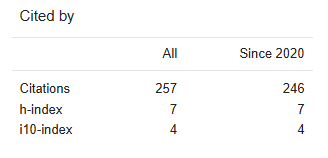Paper Details


Call For Papers
Volume 06, Issue 12
Frequency: 12 Issue per year
Paper Submission: Throughout the Month
Acceptance Notification: Within 2 days
Areas Covered: Multidisciplinary
Accepted Language: Multiple Languages
Journal Type: Online (e-Journal)
Announcement

Publish books with ISBN Number
- Edited Book
- Text Book
- Ph.D Thesis
- Conference Proceedings
ISSN Number:
2582-8568
Journal DOI No:
03.2021-11278686
Title:
Agricultural Policy of Lal Bahadur Shastri
Authors:
Cite this Article:
,
Agricultural Policy of Lal Bahadur Shastri, International Research Journal of Humanities and Interdisciplinary Studies (www.irjhis.com), ISSN : 2582-8568, Volume: 6, Issue: 9, Year: September 2025, Page No : 12-23,
Available at : http://irjhis.com/paper/IRJHIS2509002.pdf
Abstract:
Under the agricultural policy of Lal Bahadur Shastri as Prime Minister, the use of new technology in agriculture sector, formulation and implementation of farmer-oriented policies, self-reliance and food security were given priority. The government's policy of giving priority to agricultural production along with the enthusiasm and participation of farmers laid a strong foundation for integrated agricultural development. One of the extraordinary achievements of Shastri's tenure was the launch of the Green Revolution. This transformative agricultural movement aimed to boost food production and reduce India's dependence on food imports which was draining the country's foreign exchange reserves. Green Revolution in India The Green Revolution in India began in 1966-67, the founder of which was M. S. Swaminathan. Babu Jagjivan Ram, the then Agriculture and Food Minister of India, is considered the pioneer of the Green Revolution. He conducted the Green Revolution on the recommendation of the Swaminathan Committee. In the mid-1960s, when India was facing frequent droughts, M. S. Swaminathan set up a committee to implement the Green Revolution. Swaminathan worked with the famous agricultural scientist Norman Borlaug. Dr. M.S. Swaminathan is credited with bringing the Green Revolution in India. Before the Green Revolution, India was known as a 'ship to mouth' economy. At that time, India was importing 10 million tons of food grains from the US under the PL480 scheme and was desperately short of sufficient foreign exchange to make import payments. The situation had become so serious that the then Prime Minister Lal Bahadur Shastri had to call upon the countrymen to 'skip one meal a week' and not serve various wheat products including wheat chapatis in special events like weddings. Lal Bahadur Shastri implemented several important agricultural policies during his tenure as Prime Minister of India (from 1964 to 1966) with the aim of addressing the challenges faced by Indian farmers and improving agricultural productivity. His policies were instrumental in laying the foundation of the Green Revolution which transformed India from a food deficient country to a self-sufficient country in food production. To understand Shastri's agricultural policy, the achievements of the Green Revolution can be seen primarily in the form of 1) technological and institutional changes in agriculture and 2) improvement in agricultural production. In short, when Lal Bahadur Shastri's agricultural policies are viewed holistically, it appears that the objective of his agricultural policies was to modernize Indian agriculture, increase agricultural productivity, ensure food security and improve the socio-economic conditions of farmers. Through the Green Revolution, he laid the foundation for India's agricultural progress and self-sufficiency in food production in the coming decades by paying special attention to expansion of irrigation facilities, price support and procurement mechanism, agricultural credit, land reform and rural development.
Keywords:
Agricultural Policy of Lal Bahadur Shastri Green Revolution Harit Kranti Self Reliance in Food Production Lal Bahadur Shastri Food Security
Publication Details:
Published Paper ID: IRJHIS2509002
Registration ID: 22031
Published In: Volume: 6, Issue: 9, Year: September 2025
Page No: 12-23
ISSN Number: 2582-8568
Download Full Paper: Click Here
Article Preview:





